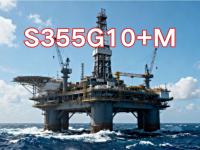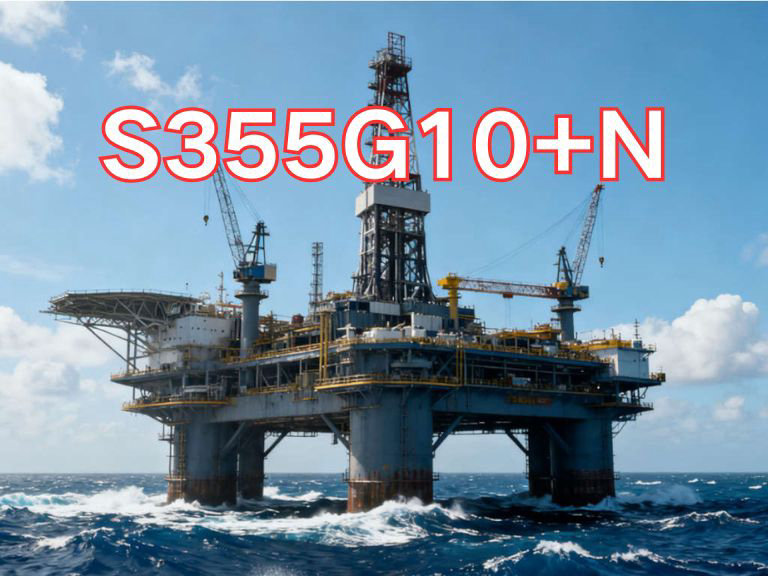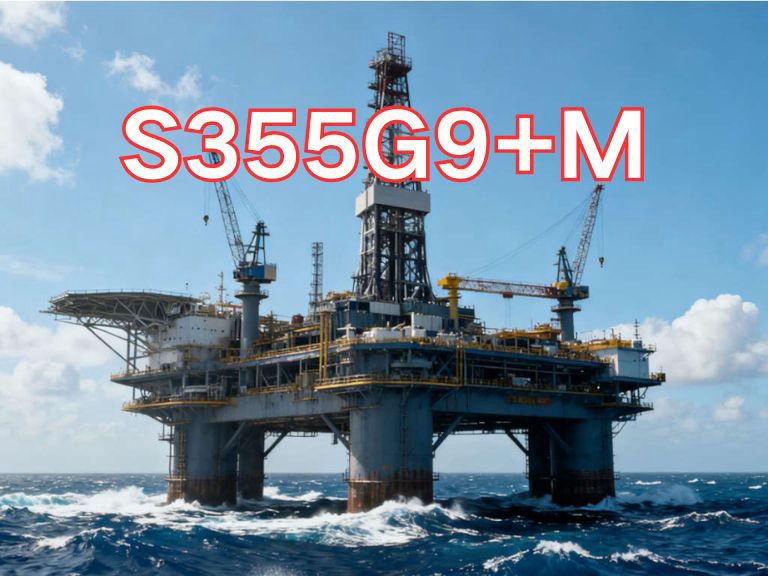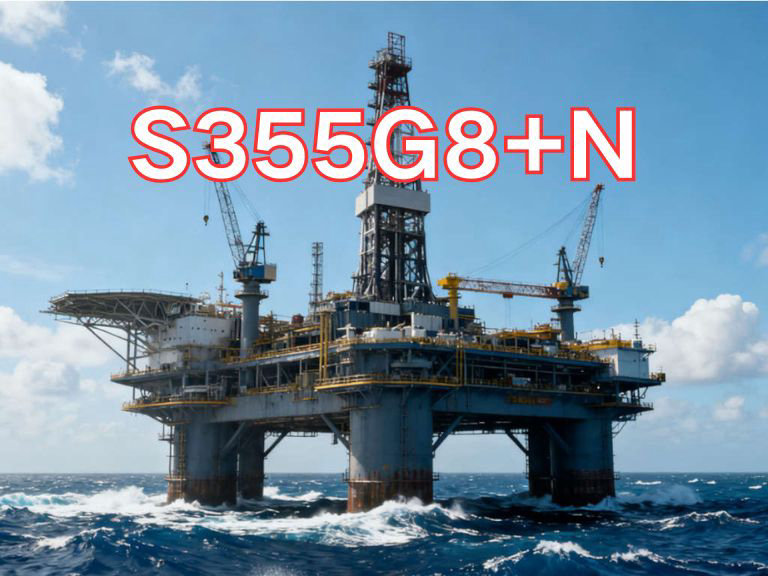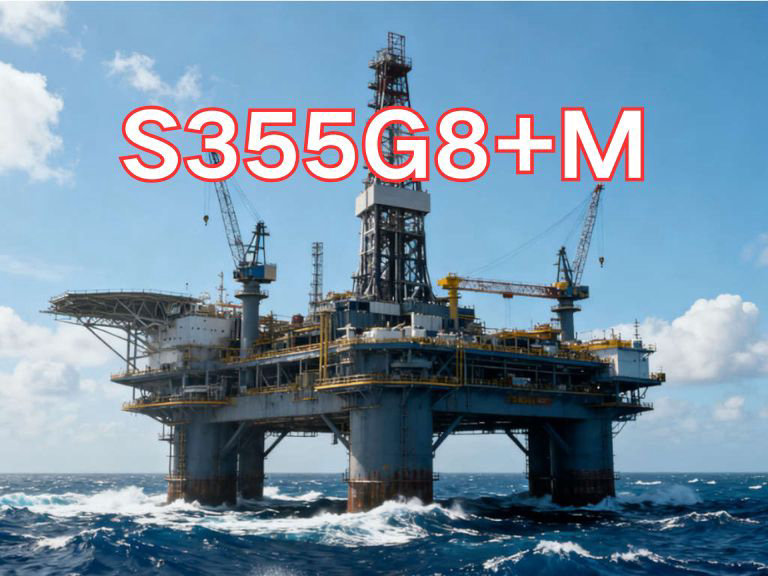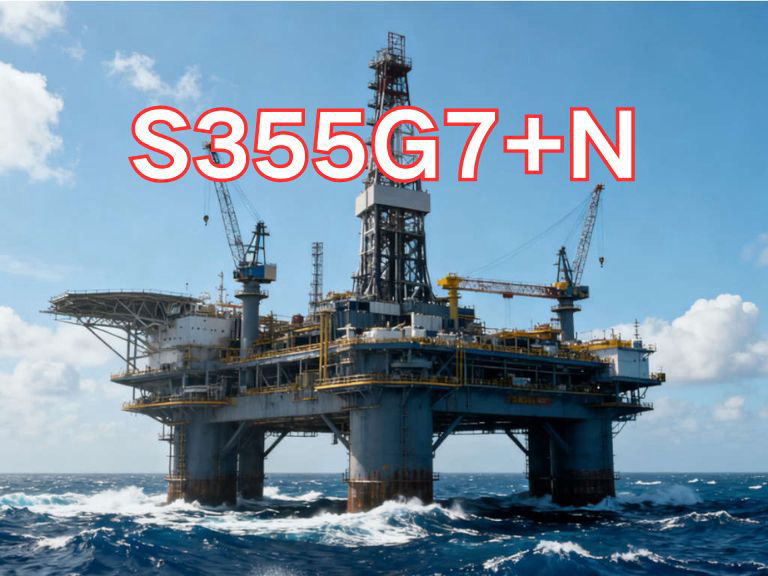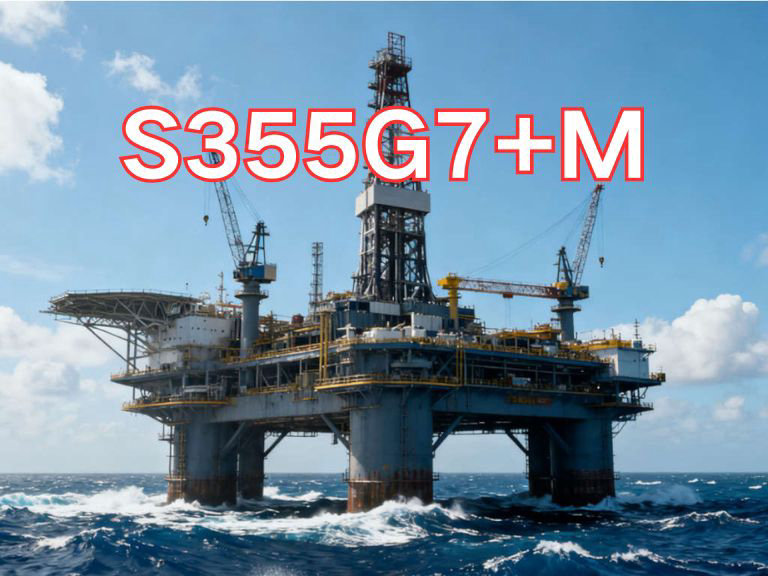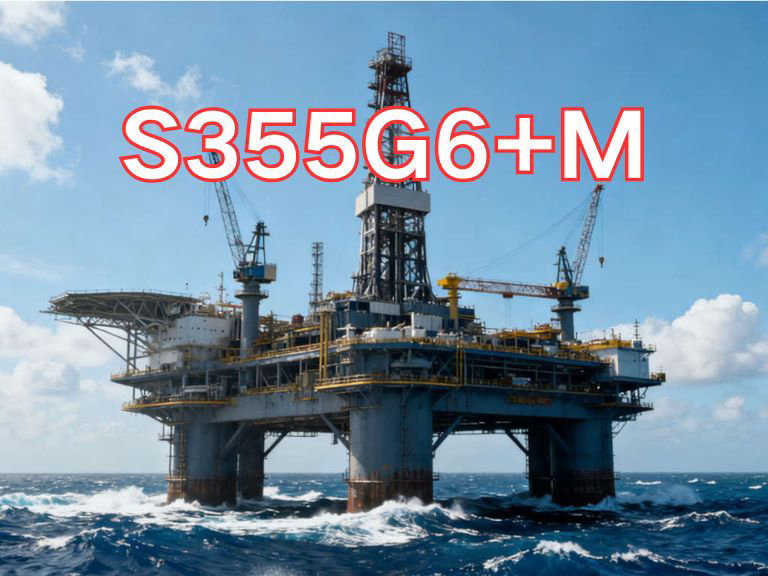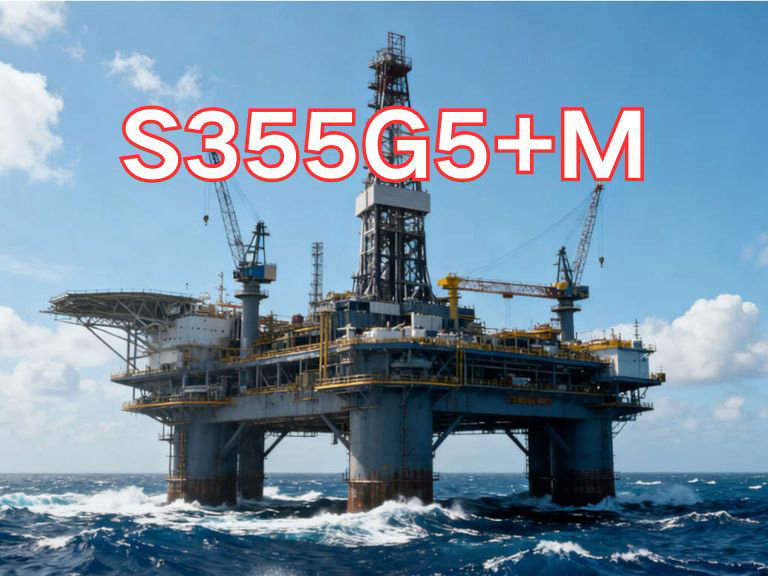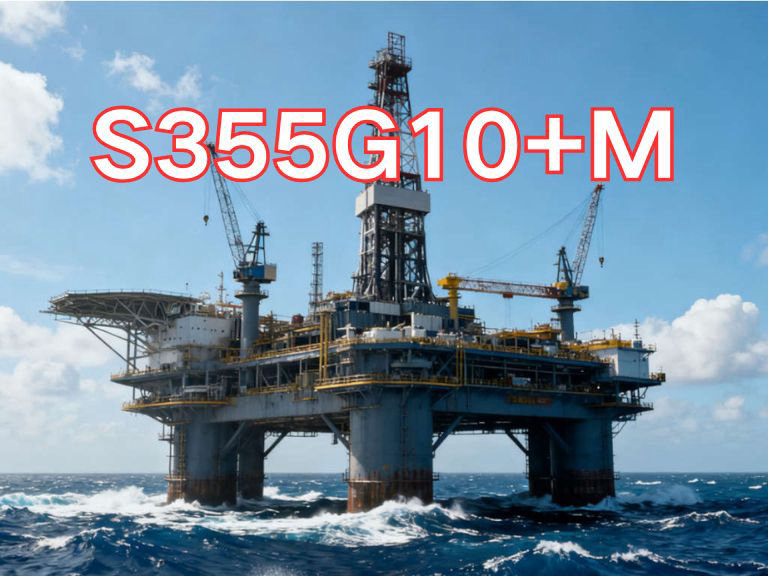

S355G10+M
S355G10+M is a high-strength marine engineering structural steel under the European standard system, and its grade contains clear performance and process codes. Among them,
- "S" stands for Structural Steel,
- "355" indicates that the minimum yield strength of the steel plate is not less than 355MPa,
- "G10" is a core characteristic identifier, specifically referring to the requirement of passing mechanical property tests for simulated post-weld heat treatment, and
- "+M" indicates that the delivery condition is Thermomechanical Controlled Process (TMCP), which optimizes the microstructural properties of the steel through rolling processes.
The application scenarios of this steel plate focus on harsh marine environments. It is a core material for supporting structures of offshore oil drilling platforms, Floating Production Storage and Offloading (FPSO) vessels, and foundation piles of offshore wind turbine towers. It is also suitable for ice-strengthened structures of polar research ships and key equipment such as booms of heavy-duty dock cranes.
Its performance advantages stem from precise chemical composition design and process control: the carbon content in the chemical composition is ≤0.12%, the carbon equivalent (CEV) is ≤0.39%, combined with ultra-low sulfur and phosphorus impurities (S≤0.005%, P≤0.015%), and micro-alloying elements such as niobium, titanium, and aluminum are added, which not only ensure weldability but also refine grain size.
It exhibits outstanding mechanical properties: the tensile strength is stably between 470-630MPa, the yield strength can still reach more than 325MPa when the thickness is 100mm, and the impact absorption energy is not less than 50J at -40℃ low temperature. After aging treatment, the toughness remains excellent. The application of Thermomechanical Controlled Process (TMCP) enables it to achieve a fine-grained structure without normalizing, which not only reduces production costs but also endows the steel plate with good cold forming ability and lamellar tearing resistance. The optional Z-direction performance of Z35 grade meets the welding requirements of thick plates.
Currently, the S355G10+M steel plate mainly adopts the EN 10225 standard, and the EN 10025-2009 standard is also referenced in some scenarios. Both standards strictly regulate the chemical composition, mechanical properties, and flaw detection requirements of steel for offshore platforms, and serve as the core technical basis for ensuring the safety of deep-sea equipment.

Ultrasonic Testing (UT)
A key non-destructive testing technique that uses high-frequency sound waves to detect internal flaws in steel plates. The probe emits sound waves, which reflect when encountering defects such as cracks or inclusions. The receiver captures the echoes, enabling precise determination of defect location and size. With high sensitivity, strong penetration, and fast inspection speed, UT effectively ensures internal quality, widely used in the production of heavy plates, pressure vessel plates, and other high-end products to guarantee safety and reliability.

Magnetic Particle Testing (MT)
A common surface inspection method that magnetizes the workpiece, causing leakage magnetic fields at surface or near-surface defects like cracks or inclusions, which attract magnetic particles to form visible indications. Simple to operate and highly sensitive, MT is suitable for rapid inspection of surface and near-surface flaws in ferromagnetic materials, widely used for online or offline inspection of plate edges, ends, and welds, ensuring product quality and safety.

Penetrant Testing (PT)
A non-destructive method for detecting surface-breaking flaws. A penetrant liquid is applied to the cleaned steel surface, allowing it to seep into defects such as cracks or pores. After removing excess penetrant, a developer is applied, causing the trapped penetrant to bleed out and form visible indications. Simple and cost-effective, PT is suitable for inspecting surface defects in various non-porous materials, commonly used for welds, castings, and complex components, effectively ensuring surface quality of steel plates.

